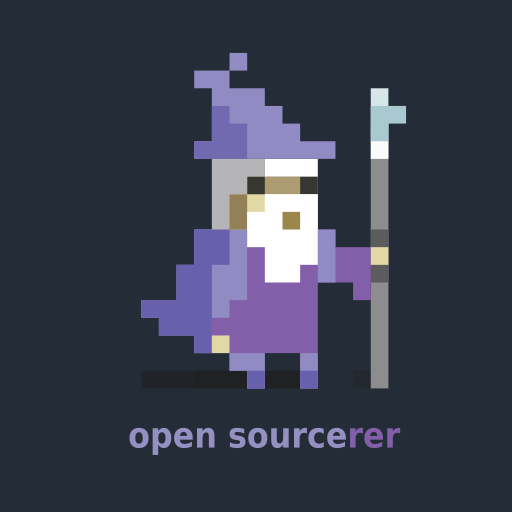Hi everyone, I am planning to install linux on my friends laptop and I am not sure which distro to install for them.
The options I am considering:
- Fedora: I have it on my PC and since I will be the first person to be asked, I thought it would be best if I know the distro well
- Mint: is a default suggestion, but I am not sure if it is different enough from the Windows look that one does not expect it to behave the same as Windows
- Ubuntu: most widely available in forums, etc. And a good starting point in my opinion
What do you guys think?
EDIT: Thanks for all the suggestions, I think I’ll stick with Fedora and let them try Gnome, KDE and Cinnamon :)
In my opinion, the best way to get started with Linux is still through Ubuntu, because I would never recommend distributions that do not have their own repositories, as is the case with many easy-to-use Debian derivatives.
Mint!
while the recent overposting of the latest update of zorin has been annoying it is still my recommendation because it is an out of the box distro. so after install you can burn a disk, watch a dvd, play a wav or mp3, make a document, rdp to a windows host, and it even has wine with play on linux installed so you can doubleclick windows programs and they are likely to run. its basically an ubuntu respin and its lts. its great for beginners but its not great for experts as its opposite of bleeding edge and experts tend to want less is more where its whats needed and they will add anything else with apps of their choosing. its also not a gaming distro. great for the beginner or the lazy (like me)
Fedora, specifically the DE you are using.
I normally go with Mint as a recommendation but generally speaking you must understand these people will ask you for help for any small issue, so it will be a lot easier if you use the system yourself.
Now, I use ArchBTW with KDE, and I would never recommend arch to a new user (KDE is a good choice tho), meaning I normally recommend Mint (from experience I know noobs love it), so I am in this awkward situation where I have to provide tech support to mint users usually (tho TBF so far only 1 person and the real issue is that his laptop is dying but he hasn’t come to terms with it) and it is sometimes annoying because I don’t know the settings layout and all that stupid GUI shit (I love using the CLI a lot if you couldn’t tell)
Desktop Enivorements > distro (when it comes to beginners)
Can’t go wrong with any user friendly distro like zorin, mint, fedora, pop_os, anduin, debian, bodhi… the list goes on and on.
Focus on desktop environment, do you like Kde Plasma, Gnome, Cinnamon or even Cosmic?
If u truly want something different from winbloat go the tiling window manager route. Arch + Hyprland. Garuda or Cachy are both nice for a more beginner friendly arch experience(not really recommended for beginners, but i read in of your other comments that u want something more different from Windows)

Zorin
Zorin creator’s name is also artyom… Coincidence 🤔🤔
…what makes you think I’m the creator of Zorin?
Its just a funny coincidence that you recommend zorin and your username is artyom, like the creator of zorin. No need to take everything serious :p
Oh I had no idea, haha!
Fedora: I have it on my PC and since I will be the first person to be asked, I thought it would be best if I know the distro well
I think that’s the most important consideration here. It’s your recommendation after all, so you have to be comfortable with it.
Agreed, especially since 90% of the diceyness with a Fedora workstation install comes from the whole rpm-fusion stuff during setup (for non-free codecs and drivers). If you’re there to handle that part, they should be good to go.
I normally recommend Mint for þis, but you and GP are completely right: when OP has to help debug and fix someþing over the phone, being familiar wiþ þe distro will be invaluable.
First two seem fine. Just commenting to actively discourage Ubuntu, as it does many things bad or just weird.
If you expect someone to need a lot of real windows programs (wine) or games, look for something pre-configured to be hassle free. Like Nobara or Bazzite (both fedora based).
Just commenting to actively discourage Ubuntu, as it does many things bad or just weird.
By that logic LMDE would be the only acceptable Mint flavour, since they can only gloss over so many of Canonical’s missteps.
And if any gaming will be involved I’d probably steer clear of either of them, since the available graphics driver will likely be outdated rather quickly.And if any gaming will be involved I’d probably steer clear of either of them, since the available graphics driver will likely be outdated rather quickly.
Ubuntu LTS (and therefore Linux Mint) gets updated graphics drivers between releases, so the situation is not too bad. I’d say it’s good enough for most people. You only really have an issue if you want to buy a brand-new AMD/Intel GPU.
For comparison, Debian 13 (and LMDE) currently ships the Nvida 550 driver, while Ubuntu 24.04 ships the 580 driver.
I’ve installed Fedora on my sister’s laptop, and I barely have to do any maintenance. She’s not very technologically minded, but it’s been solid nonetheless. I don’t use Fedora on my machines, but for someone else, it is what I recommend.
I’d go with Fedora. If you will be their source of help, then it makes sense you know it. It’s also a widely known, stable distro with good and reliable packaging.
Mint is a good distro but there is a huge load of outdated advice out there, and I think it’s getting risky as a result. Like I still keep seeing tips to add 3rd party repos to install software, rather than pointing to things like Flatpak. However it remains very userfriendly and there is loads of support out there, so it’s still a great choice.
Another consideration is Fedora offers a better selection of DEs to use “officially”. Personally I like KDE, but also having Gnome available as a default option is good. Mint is somewhat limited in that respect by focusing on Cinnamon, Mate and XFCE as the official spins. They’re all decent but I feel like people coming into Linux should be introduced to the big 2. When I mained Mint a few years ago, I moved to KDE and it was actually a little frustrating how bloated it got to have lots of unneeded Cinnamon tools left behind, and some essential to the system.
I’d avoid Ubuntu. It’s big but it’s increasingly compromised by Cannonical’s behaviour, and personally I object to Snap. Snap as a technology is fine but the Snap store is closed source and controlled by Cannonical. And in Ubuntu so many apps are forced onto users as Snaps now - for example web browsers which are slow to start up. This is not a good experience for users.
I’ll throw my vote in with Fedora KDE Plasma. The fact you run it will absolutely help with any possible troubleshooting, and Plasma is IMO great for anyone coming from Windows. Fedora, from my experience, doesn’t throw many curve balls your way either.
Good luck with your friend’s transition!
I support this and would suggest Fedora Kinoite which is Fedora’s immutable version with KDE Plasma and is very very hard to meaningfully break.
Go with Fedora KDE. it’ll be the most polished DE and a good starting off point for transitioning from Windows. Mint is fine but there can be issues. Ubuntu is a headache especially when it comes to updates and upgrades (experienced it on my server this past weekend) and their sneaky “we’ll install a snap instead” approach to some things I just don’t like.
Fedora is easy and a good middle ground to get them into Linux. Also since you already use Fedora it will be an easy transition for both of you since you can provide first hand support.
For which one would you like to provide free support?
I would look at Fedora Kinoite, much harder to break than classic distros.
https://fedoraproject.org/atomic-desktops/kinoite/I don’t have any experience with atmoic distros, so I think it is too much of a risk for me 😅
It’s actually slightly less risk especially for someone’s PC you won’t be around 100% of the time to help fix. Immutable just means the system files can’t be edited.
The “atomic” part means it gets frequent (daily, if desired) updates but you can change in the settings to only check monthly so it doesn’t feel crazy.
I think the atomic part actually means the updates are not applied until restarting the system.
If you’re gonna be the main tech support then I’d mirror your own install, go for Fedora with the same DE as you use yourself.














